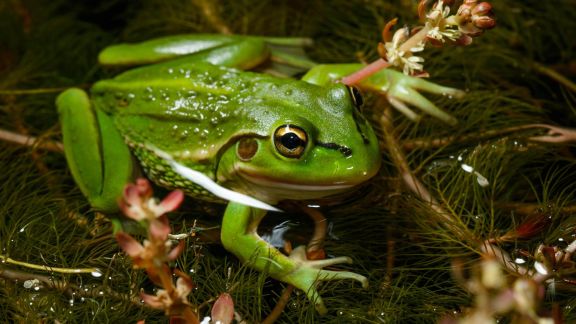The remarkable wildlife of Victoria’s South-West
31 January 2024

Victoria's South-West is acclaimed for its diverse landscapes, coastlines and ocean environments, including the iconic ranges of Grampians-Gariwerd, vast expanses of the Victorian Volcanic Plain, internationally significant wetlands of the Western District Lakes and Port Phillip Bay and forests of the Great Dividing Range.
It is also recognised for its spectacular wildlife, including some unique to the region.
A new book by Federation University wildlife ecologist Dr Grant Palmer from the Future Regions Research Centre and the Institute of Innovation, Science and Sustainability, and Federation alumni Jules Farquhar explores the region's remarkable wildlife spanning from Melbourne in the east through to the South Australian border.
Wildlife of Victoria's South-West (CSIRO Publishing) provides a guide and detailed insight into all the mammals, birds, reptiles and frogs found in the region. It includes stunning images and distribution maps for each species.
The book also explores the conservation challenges faced by wildlife in the region and describes features critical to conserving species into the future.
Dr Palmer says the terrestrial and coastal ecosystems of the region support high species richness, and the book profiles 432 species of native wildlife occurring in the region, including 62 mammals, 290 birds, 62 reptiles and 18 frogs.
Their identification, distribution, conservation status and ecology are described, along with places to find them within the region. Where known, the local Aboriginal name for each species is listed.
"It is timely to shine the spotlight and focus the binoculars and camera on the region's wildlife," Dr Palmer said. "New national parks are being established in the region, recognising their outstanding natural areas and conservation values."
"The region's rich biodiversity is recognised at the national and global level, and the diversity of wildlife in the region is outstanding. This book will enable people to identify, understand and engage with the wildlife in their surrounds."
He says the recent World Heritage listing of the Budj Bim Cultural Landscape demonstrates the Gunditjmara people's care for the natural environment and resources for more than 30,000 years which has helped to shape the wildlife communities we see today.
Observing wildlife forms a prominent part of the wild experience when people immerse themselves in nature, such as hiking the new Grampians Peak Trail or when camping, Dr Palmer said.
 He says while wildlife can always be readily encountered, many species have undergone extensive declines and face significant risk of extinction. Though the region continues to provide vital habitat, active conservation and management are needed to allow their long-term persistence.
He says while wildlife can always be readily encountered, many species have undergone extensive declines and face significant risk of extinction. Though the region continues to provide vital habitat, active conservation and management are needed to allow their long-term persistence.
"There are many benefits in engaging with wildlife, including social and personal benefits associated with spending time in natural environments. We must continue to build up our knowledge of species, where they occur and the habitats they use so that we can make the best decisions for their conservation. Citizen science will be critical in this information gathering going forward."
Dr Palmer says understanding and valuing the wildlife species around us is crucial to their ongoing conservation.
"This wildlife guide will enhance people's enjoyment, experiences and understanding of the species occurring in Victoria's south-west, and it is hoped it will facilitate and promote their engagement with nature," he said.
This book complements Dr Grant Palmer's book Wildlife of the Otways and Shipwreck Coast.
"It will be useful to those who want to identify and learn more about the species and diversity of wildlife in the region and will build an understanding of Victoria's south-west's role in contributing to conserving Australia's stunning wildlife," he said.
"I grew up in Victoria's South-West and have spent more than 25 years researching and monitoring the region's wildlife. The wildlife found here is amazing, but it is concerning that I can pinpoint many species that are no longer found where they used to be or now occur in much lower numbers than previously."
Related reading:
Tracking Ballarat’s koalas as urban sprawl threatens their habitat
Our fired landscape – why things are different now


